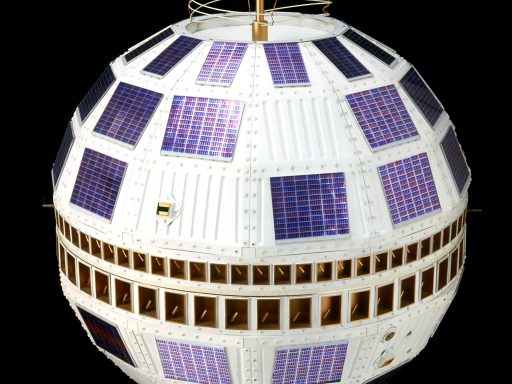It’s that time of year again, when the annual Perseid meteor shower lights up the skies. This year’s display promises a good blaze, weather permitting, as there’s no interfering moonlight. The meteor shower occurs as the Earth passes through debris from Comet Swift-Tuttle and meteoroids burn up in our atmosphere. It gets its name because the radiant, the point in the sky the ‘shooting stars’ seem to come from, is in the constellation of Perseus. Look for this near the […]
In recent days, the aurora borealis, better known as the Northern Lights, have been visible at more southerly latitudes than usual thanks to solar storm activity. If you tried to have a look but were scuppered by the weather, or like us at the Science Museum you’re just too far south, enjoy these images of the aurora from our picture library instead. Of course, if you’re far south enough, you’ll be looking for the Southern Lights instead. The aurora australis […]
Monday marked 401 years since Thomas Harriot made the first recorded astronomical observation with a telescope – so one year since we opened our Cosmos & Culture exhibition celebrating Harriot and other astronomers. For the last year, we’ve been lucky enough to have some of Harriot’s drawings on display, but for their long-term preservation it’s time to remove them from the light. This weekend is your last chance to see the centuries-old originals before we return them to their owner’s care and replace them […]
So, did any of you make it to Easter Island to see last weekend’s total solar eclipse?
Our car is still fitted with a cassette player. Albums from long ago (Steely Dan and Beatles are current favourites) provide regular entertainment on journeys and are also enjoyed by the younger members of the family. I suppose we should have moved over to a CD player or something more exotic still, but somehow it seems unnecessary while the cassettes hold out (now 25 years old plus and still working fine!) I suppose the same can now be said of […]
The European Space Agency has just released the first all-sky map from the Planck satellite. The centre of the map is dominated by purple swirls from the dust around our Galaxy, but Planck’s main business is to look closely at the blobby structures visible in the map’s outer regions. These ‘blobs’ show temperature fluctuations in the Cosmic Microwave Background (CMB), the remnant radiation from the Big Bang. Irregularities in the CMB became the seeds of today’s galaxies. The fluctuations in the background radiation were first mapped by […]

We celebrate the anniversary of the first communications satellite launching into orbit, making it possible for us to watch the World Cup from anywhere in the world.
A few days ago I drove past the ‘umbilical’ tower for NASA’s new (but now postponed) Ares rocket programme. Although smaller it is reminiscent of the far taller structures of project Apollo. Both Ares and Saturn were ‘mated’ to their respective towers inside the vast Vehicle Assembly Building (VAB) and then rolled out on a ‘crawler’ to launch pad 39 A or B at the stately rate of 1 mph. The towers for the soon to be terminated Shuttle programme, […]
Walk into any museum curator’s office and you’ll encounter a mass of books and papers. It’s not that we’re messy – well okay, I am – but a lot of the material we use can’t always be found on the web. Even on Stories from the Stores. One of my favourite books on my shelves is Astronomy Explained upon Sir Isaac Newton’s Principles by James Ferguson, who was born 300 years ago last Sunday. Published in 1785 (the first edition […]
On Tuesday I attended our annual ‘Fellows of the Science Museum’ reception, in which we recognise the contributions of leading scientists and educators. This year we were particularly celebrating female scientists, with a speech from new Fellow Jocelyn Bell Burnell. In 1967, Jocelyn was a PhD student at the Mullard Radio Astronomy Observatory in Cambridge. Her job was to analyse data from one of the telescopes for the characteristic twinkling of quasars. One day she noticed a ‘bit of scruff’ on the telescope’s […]
Caroline Herschel was the first professional female astronomer. We explore more about her immense contributions to astronomy.
Lots of talk about the budget this week – and science funding is still uncertain. But as these examples from our Cosmos & Culture exhibition show, astronomers have always had to rely on a combination of persuasion, impressive results and skilled PR to keep their work funded. Tycho Brahe’s observations of the ‘new star’ of 1572 (a supernova explosion) impressed the Danish King Frederick II. He subsidised Tycho’s research by building the finest astronomical observatory of the times. The next King stopped the subsidy, so […]